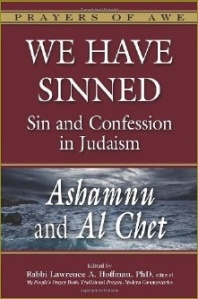Archive
Formulating a Response to the Satmars’ Secret Mass Gathering
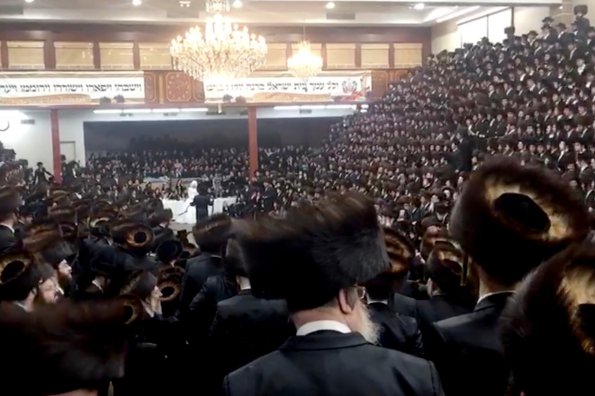
Do you support this kind of behavior? If not, say so.
Earlier this month, we now know, the Satmar Jews of Williamsberg conspired to bring thousands of people together in reckless and flagrant violation of COVID safety procedures. A leaked photo of the event confirms a huge mass of people gathering indoors without masks or social distancing of any sort. And a Nov. 11 write-up in Der Blatt, a newspaper closely allied to the Satmars, confirms that organizers purposely concealed the event from “the ravenous press and government officials,” adding that “preparations were made secretly and discreetly.” So there is no doubt that (a) there was a dangerous mass gathering; and (b) organizers schemed to hide it from the public eye. These facts are not in dispute.
My question is what response this demands from Jewish leaders who do not support what the Satmars did.
I and many others have consistently chastised moderate religious leaders who refuse to denounce their more radical factions. An imam who doesn’t denounce a Hizballah suicide bombing, for instance, tacitly supports it, just as a minister who doesn’t denounce the bombing of an abortion clinic in Jesus’ name implicitly approves of it.
So it’s obvious to me that Jewish leaders must speak out, perhaps only briefly, or perhaps at length, if they object to the gathering. To stay silent after such a dangerous event is to endorse it.
To help such a response, here are a few facts:
- The recklessness of this event is unrelated to the recent Supreme Court case that, in effect, invalidated New York State’s capacity limitations on houses of worship, because recklessness does not necessarily involve breaking a specific law. There is no expert in the world who believes that the Satmar gathering was safe.
- This case is unrelated to the Establishment clause of the First Amendment that demands separation of church and state. No one doubts that local building codes apply to churches and mosques and synagogues, for instance, just as everyone agrees that even Kosher caterers must follow FDA safety guidelines. That’s because everyone agrees that government officials are permitted and even required to regulate matters of safety.
- As a matter of Jewish Law, it doesn’t matter if (as I believe) attending a wedding is a luxury, or if (as I think the Satmars may believe) attending a wedding is a commandment. Either way, the commandment of piku’ach nefesh — saving a life — takes precedence, in this case militating against a mass gathering of any sort for any purpose.
- The groom in this case was Rabbi Joel Teitelbaum. He is the grandson of Rabbi Aaron Teitelbaum, who is the Satmar head rabbi and the leader of the Satmar community. Rabbi Aaron Teitelbaum had both the authority and ability to limit attendees in furtherance of piku’ach nefesh. (I hope that he was simply too ignorant to know that COVID is dangerous. I fear that he didn’t care.)
- In October, the New York State health commissioner personally intervened to prevent a similar Satmar wedding planned for the same venue. That October wedding was scaled back, in contrast to this November one. Why, I wonder, could they scale back the first wedding but not this one?
Furthermore, the government’s greatest obligation is to protect its citizens, both reactively and proactively. So I believe that the strongest possible governmental response is called for here, and that the paltry $15,000 that New York City levied on Nov. 23 is insufficient. I also believe that Jewish leaders have an obligation to support the government as it pursues appropriate action against the Satmars.
My own response is this: In spite of the gulf that separates me from the Satmars religiously, politically, and ideologically, I consider them my brothers and sisters. This is why I am so pained by what they did. They hurt me and they hurt themselves. I want to be clear: They do not act in my name and I abhor what they have done. I hope people will not judge me or my community by their actions. And I am sad for the Satmars. They more than almost any other Jewish community should know how good America has been to them. (The Satmars are forbidden to live in Israel.) They are biting the fantastically generous hand that feeds them. To outsiders their ways appear primitive, misogynistic, and even deranged, yet they are afforded all the rights and privileges of citizenship in this country. Local hospitals will treat the Satmars who caught COVID at the wedding, just as local police will protect the cemeteries where they will be buried.
New York City parking laws were even changed to help the Jews celebrate Judaism. The City has welcomed two Jewish mayors. The State vigorously prosecutes acts of antisemitism. And the U.S. has empowered an unprecedented Jewish revival. In return, all the Satmars had to do was not hurt anyone. And, it seems, even that was too much to ask. How did it come to this?
Good Bye, Vassar Temple
Though I started working at Vassar Temple five years ago, I first heard about the place two years before that from my colleague and dear friend Rabbi Shoshana Hantman. “They’re a really nice group of people,” she was fond of saying about Vassar Temple.
With only a few exceptions, she was absolutely right.
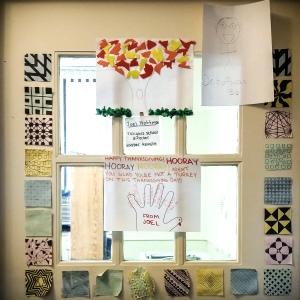
Artistic gifts from students and teachers adorn my office door
And I say that having observed or consulted to hundreds of schools on five continents (soon to be six!). In fact, when I would tell my colleagues where I was working, the single most consistent response mirrored Rabbi Hantman’s remarks: “That’s a nice congregation,” frequently followed by a kind reference to Rabbi Arnold and Rabbi Golomb, and, most recently, Rabbi Berkowitz.
As I look back on five years, I certainly don’t want to minimize our technical accomplishments together. We built a thriving Hebrew school that draws members from neighboring congregations. We quadrupled the size of the post-bar/bat mitzvah Wednesday evening program. We grew the overall school by eight percent year over year when most religious schools are losing students.
Those feats, noteworthy in themselves, are also good for the financial heath of the congregation: good for the Jews and good for the bottom line, one might say. Or, as Rabbi Stuart Geller observes: the religious school is the financial engine that pulls the synagogue train.
So I don’t want to make light of bringing in new members or of increasing enrollment. But neither are these statistics the things that stand out most in my mind.
Rather, I remember non-tangible manifestations of a holy community.
For example, when our last Hebrew-school session of the year for grades 5-7 came to an end at 6:00pm on the Wednesday before Passover, the nearly 20 students in attendance refused to leave. Instead of bolting out of the school — as children so often do in other settings when class ends — they stayed behind, savoring a few final moments with each other and their Hebrew teachers. Surely this is what the Rabbis had in mind when they inserted the line into our morning liturgy, “make the words of your Torah sweet to us.”
When four Sunday-school teachers called in sick at the last minute last year, the remaining, healthy teachers jumped into action to run a constructive program together. One high school-aged teacher offered to teach a different class, improvising as she went. Another agreed to teach alone, though she had planned to work with a partner. And so on down the line. Though extreme, that day was hardly atypical, as teachers regularly volunteered to help each other out, never losing the smiles that came to symbolize our time together on Sunday mornings. What better way could there be to realize the Rabbis’ hope that we serve God together in joy?
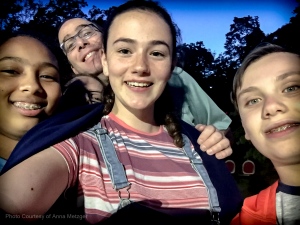
Good-bye selfie
The list goes on: Sixth graders who eagerly anticipated their opportunity — though at least two years away — to teach in the school. Middle- and high-school students who insisted on starting each class with, “How was your week?” Grade-school students who were so proud of their work that they begged me to come into their classrooms for a closer look. Students who complained when I canceled class for snow that never arrived. Teachers who focused not just on what we were teaching but even more on who we were teaching.
In Pirkei Avot — “The Sayings of the Ancestors” from almost 2,000 years ago — Rabbi Shimon declares that the world is sustained by three things: Torah, service to God, and kindness. Later, still in the spirit of groups of three, he enumerates three crowns: the crown of monarchy, the crown of priesthood, and the crown of Torah. Then, having listed three, he adds a fourth, a crown that outweighs the other three: the crown of a good name.
More than a millennium later, Ovadiah ben Avraham of Bartenura wrote about this, suggesting that the crown of a good name refers specifically to a good reputation for doing good deeds.
Taken together, Ovadiah and Shimon tell us that being known for the right things is more important than royalty, more important than religious leadership, and even more important than Torah itself.
And this is what I will remember from my five years running the school at Vassar Temple: students, parents, teachers, leaders, and rabbis who in overwhelming majority are deservedly known for the way, through personal example, that they model the three things upon which the world stands: Torah, service to God, and great kindness.
Blessed is God, who crowns us with glory.
[An abridged version of this piece first appeared in the Vassar Temple June, 2016 bulletin.]
Why Mississippi’s Religious Liberties Law Is More Nuanced Than You Think
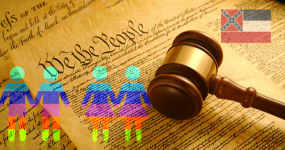 Do you think that a wedding florist should be allowed to deny service to a gay couple just because they’re gay?
Do you think that a wedding florist should be allowed to deny service to a gay couple just because they’re gay?
Do you think that a Jewish photographer should be allowed to refuse photography services to a Neo-Nazi group just because of the nature of that group?
Do you think that a store — on religious grounds — should be allowed to refuse insurance coverage for birth control?
Do you think that an advertising agency — on contrary religious grounds — should be allowed to refuse to help that store’s owners explain their position?
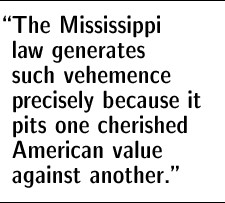 If you have different answers for these four questions, then you appreciate the complexity of Mississippi’s controversial “Protecting Freedom of Conscience from Government Discrimination Act” (HB 1523), which was just signed into law; of Georgia’s similar “Free Exercise Protection Act” (HB 757), which that state’s governor vetoed; and of similar legislation.
If you have different answers for these four questions, then you appreciate the complexity of Mississippi’s controversial “Protecting Freedom of Conscience from Government Discrimination Act” (HB 1523), which was just signed into law; of Georgia’s similar “Free Exercise Protection Act” (HB 757), which that state’s governor vetoed; and of similar legislation.
Mississippi’s law claims to protect people, and groups of people, who act based on a “sincerely held” belief or “moral conviction” in any of three hotly debated tenets:
- Marriage is only between one man and one woman.
- Sex should be confined to such a one-man-one-woman marriage.
- People have only one gender (“sex”), the biological one with which they were born.
Opponents to the law say it legalizes discrimination against, for example, gay couples.
Proponents counter that it protects religious freedoms.
In my opinion, both claims are right (though that doesn’t mean that I think both sides have equal merit). The Mississippi law generates such vehemence precisely because it pits one cherished American value against another.
In this country we believe in equality before the law. We have already established, for instance, that it’s illegal to set out to hire men instead of equally qualified women, no matter how much an employer may prefer working with men.
In this country we also believe in freedom of religion. We have already established, for instance, that the Church can bar women from certain positions of leadership, no matter how qualified they might otherwise be.
Or to look at it differently, the opponents to Mississippi’s law say that, in this case, equality trumps religious freedom. Proponents say that these religious freedoms trump equality.
And here, I think, is the real issue: when these two supreme values collide, which one do we, as a society, choose? And why?
Unfortunately, the public conversation plays out differently.
Proponents double down, defending their religious position, for instance, that marriage is, was, and always shall be between one man and one women. (I think they’re wrong, but that isn’t the point.) They ignore the fact that similar religious arguments were advanced in the 19th century to defend slavery. And they ignore the fact that even Christian-owned stores are not allowed to discriminate against women, even though the Church is.
Opponents also double down, defending their position, for instance, that a marriage between two men is just as valid as a marriage between a man and a women. They ignore the fact that they might experience supreme discomfort if they had to work in support of the KKK. (The KKK probably takes offense at my position, but that isn’t the point.) And they ignore the fact that laws already permit religious gender-based discrimination.
So I have a challenge:
If you defend this law, why do you think that these particular religious beliefs are more important than equality? That is, how is an anti-gay-marriage stance different than, say, 19th-century pro-slavery religious beliefs or, more generally, other gender-based religious beliefs?
If you oppose this law, why do you think that these particular religious beliefs should be squashed? That is, how is forcing people to support gay marriage different than, say, forcing people to work on their sabbath, or forcing people to support other things they don’t like, such as perhaps, the KKK?
And in the meantime, as we continue to discuss this law, perhaps we can at least tread softly out of respect for people who disagree with us.
The Bible’s Cutting Room Floor Goes On Sale Today
 Ever wonder what happened to Adam and Eve after they left the Garden of Eden? There’s an answer, but it was cut from the Bible.
Ever wonder what happened to Adam and Eve after they left the Garden of Eden? There’s an answer, but it was cut from the Bible.
Curious about how Abraham discovered monotheism? That was cut too.
So was the once-popular Book of Enoch, written before the Book of Daniel and quoted in the New Testament.
Though they fell to the Bible’s cutting room floor, we still have the ancient texts that answer these and similar questions, filling in blanks in our current version of the Bible.
In addition, these fascinating writings from antiquity offer surprisingly modern insight into the nature of our lives as they explore good and evil.
These are the topics of my latest book, The Bible’s Cutting Room Floor: The Holy Scriptures Missing From Your Bible, which goes on sale today.
I hope you enjoy it.
What’s the Deal with the Camels in the Bible?
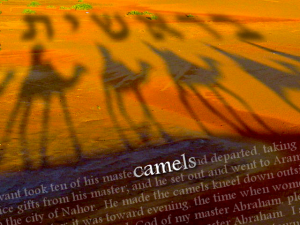 So far this week, the New York Times and Time Magazine, among many other usually respectable news outlets, have reported on scientific evidence that camels weren’t domesticated until about the 10th century BCE. That’s true.
So far this week, the New York Times and Time Magazine, among many other usually respectable news outlets, have reported on scientific evidence that camels weren’t domesticated until about the 10th century BCE. That’s true.
They add that this is a problem for the Bible because Abraham and the other patriarchs, who owned camels, lived much earlier. This part is wrong. And it demonstrates a pretty surprising naivete on the part of these and other mainstream news organizations.
First of all, let’s be clear. According to Genesis, Abraham lived to be 175 years old, so it’s not the camels that are hard to explain.
But the real misunderstanding is demonstrated by this line from the New York Times: “Abraham, Jacob and Joseph […] lived in the first half of the second millennium B.C.” No they didn’t.
As I’ve explained in detail in And God Said — and summarized on-line for the Huffington Post (“The Bible Isn’t The History You Think It Is“) — the Old Testament is divided into three sections: the creation of the world (Adam up to Abraham’s father Terah), the creation of the Israelites (Abraham to Moses) and life in Jerusalem (after Moses). Only the third part was meant as history. The first two parts — Adam, Noah, Abraham, Joseph, and all the rest — serve other purposes.
So Abraham didn’t live in the first half of the second millennium, just like the heroine in Song of Solomon didn’t have birds for eyes, in spite of the poetic line in verse 4:1 that her “eyes are doves.”
Though I’m regularly surprised that so much misinformation surrounds the Bible, this kind of widespread mistake does help explain why many scientists don’t appreciate the Bible’s value, and why many religionists increasingly have no use for science.
A Short Torah Story
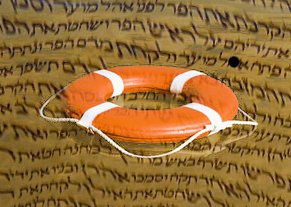 It was raining, so we started by talking about that. As it happens, one of the kids had just come back from Colorado, recently ravaged by floods, so the conversation naturally turned to flooding. That segued into flood damage, followed by what one might save in a flood, and, from there, saving a Torah in a flood.
It was raining, so we started by talking about that. As it happens, one of the kids had just come back from Colorado, recently ravaged by floods, so the conversation naturally turned to flooding. That segued into flood damage, followed by what one might save in a flood, and, from there, saving a Torah in a flood.
It was Sunday morning, and I was teaching 7th graders.
“Would you save a Torah from drowning?” I asked the class.
“Yes,” all of the students agreed.
“Why?” I asked.
“Because,” one of the students replied, “it would do the same for me.” Tee hee.
The funny thing is that it would.
I explained why.
The Torah is one of the three parts of the Bible, the other two being the “prophets” and the “writings.” The students’ haftarah portions come from the prophets. The writings include well-known works like the Book of Esther (more commonly known as the “Megilah” and read or chanted on Purim), Psalms (such as the famous Psalm 23 that begins “The Lord is my Shepherd”), and so on.
The great Rabbis gave us two major kinds of commentary on the Bible, the first in the form of the Midrash, and the second in the form of the Talmud. It’s that second compendium that offers advice on all manner of things: when to light Shabbat candles and how to read the Torah, why some kinds of damages are like oxen but others like pits, what kind of damage an ox owner is responsible for and why only dead elephants can be used as a wall for sukkah, etc.
One passage in the Talmud section known as kiddushin addresses the obligations a parent has toward a child, including the stipulation that the parents are supposed to teach their children to swim.
Without the Torah, we wouldn’t have the Bible. Without the Bible, there’d be no Talmud. And it’s the Talmud that records the importance of knowing how to swim.
It’s a round-about result, but the Torah did save us from drowning. The student had it exactly right.
This is how a conversation about the weather and our weekend plans turned into a lesson about the centrality of Torah in our lives.
[First published in the Vassar Temple November 2013 bulletin.]
How the Secular Date of Dec. 5 Made Its Way into the Jewish Calendar
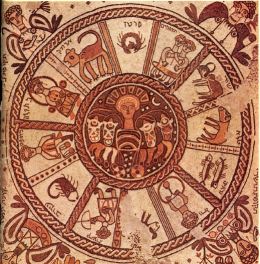 December 5 may be the most arcane date of importance in the Jewish calendar. It’s when we start saying the winter prayer for rain.
December 5 may be the most arcane date of importance in the Jewish calendar. It’s when we start saying the winter prayer for rain.
Right off the bat, a question presents itself: Why do we use a secular date to delineate this Jewish custom, when all of the others are based on the Jewish calendar? And secondly, what’s the magic behind December 5? The answers take us on a fascinating journey through Jewish text, nature, astronomy, history, infrastructure, and politics.
There are in fact two times we add a mention of rain to our service. The first, more familiar now, is the short insertion in the Amida prayer about God’s power: mashiv ha-ru’ach umorid ha-gashem. God makes the wind blow and the rain fall. The second is an addition to the prayer petitioning God for bountiful produce: ten tal umatar livracha. Grant us the blessing of dew and rain.
The 1800-year-old Mishnah — the initial compilation of Jewish law and practice — discusses both of these in the chapter called Ta’anit (“fasting”), starting with the first one.
There was general agreement that the insertion should commence during the rainy season, roughly Sukkot. The Mishnah records a disagreement about the details. Rabbi Eliezer considered the first day of Sukkot a good time to start praying for rain, but Rabbi Yehoshua countered that no one wants rain on Sukkot, so it would be better to wait until the end of the holiday.
But Sukkot is a pilgrimage holiday, when it was common to ascend to Jerusalem by foot. If we start praying for rain right after Sukkot, it might rain on those who are walking home.
So regarding the second insertion, Rabbi Gamaliel says that we should wait until 15 days after Sukkot to start praying for rain, that half-month being a reasonable amount of time to walk back to the farthest extent of the Land of Israel.
The Talmud — the great codification of Jewish law and practice that contains the Mishnah and meandering commentary on it — expands on the Mishnah and explains that in Babylonia they didn’t start saying the prayer for rain until 60 days into the rainy season of fall.
Jewish geography is exceedingly simple. There are essentially only three places: Jerusalem, the rest of Israel, and the rest of the world. Therefore, we in New York live in the same place (“the rest of the world”) as the Babylonians, so we follow their custom. We start saying the prayer for rain 60 days after the equinox.
The equinox is either September 22 or September 23.
But the careful reader may notice that 60 days after September 22 or 23 is November 21 or 22, not December 5. So we keep digging.
Shmuel, in the Talmud section known as Eruvin, calculates the four seasons as each lasting 91 days and 7.5 hours, and assigns September 23 as the start of fall. Because his became the official Jewish secular calendar, the Jewish equinox is always September 23. But we still wonder why we don’t start praying for rain on November 22.
Shmuel’s year of four seasons lasted 364 days and 30 hours, or 365.25 days. The solar year, though, is actually 11 minutes and 14 seconds shorter. Because of this discrepancy, the Jewish equinox has slowly moved forward compared to the solar equinox, at the rate of approximately one day every 128 years.
The Catholic Church (by coincidence) also used Shmuel’s calendar, but unlike in Judaism, most of the Christian holidays are based on the solar date. By 1582, the official and solar calendars were 10 days out of sync, one result of which was that the springtime holiday of Easter was marching forward into summer.
So Pope Gregory fixed the calendar by doing two things. He dropped 10 days in October (the day after October 4 was October 15 that year), and, moving forward, he dropped 3 leap years every 400 years: years that are divisible by 100 would no longer be leap years unless they were also divisible by 400. (That’s why 2000 was a leap year even though 1900 wasn’t, and 2100 won’t be.)
In America and elsewhere in the world we use the Gregorian calendar.
The Jews, though, didn’t give a damn about Pope Gregory. So in 1582, the Jewish equinox moved ahead 10 days to October 3, the Gregorian equivalent of the Shmuelian September 23. Since then, 1700, 1800, and 1900 have been Shmuelian leap years but not Gregorian leap years. So now the Shmuelian equinox is the Gregorian October 6.
Sixty days after October 6 is December 5. And there you have it.
But don’t get too used to that date. In the year 2100 (a Shmuelian leap year) the day moves ahead to December 6.
[Reprinted from the Vassar Temple December 2012 bulletin.]
Truth, Lies, and Sins
 I’ve been thinking a lot about truth lately.
I’ve been thinking a lot about truth lately.
For one thing, it’s been in the national news, for instance when Neil Newhouse, a senior advisor to presidential candidate Mitt Romney, told ABC news that, “We’re not going to let our campaign be dictated by fact-checkers.” That sounds a lot like a dismissal of the truth. Could that be because lying isn’t illegal?
I suspect that it would be a career-ender, or worse, for a campaigner to suggest that “we’re not going to let our campaign be dictated by judges,” or in any other way to suggest that following the law wasn’t supremely important. But, apparently, it’s okay to dismiss the truth.
This callousness about the truth — and the widespread willingness to accept compromises on the truth — is especially surprising in a culture marked by such catchphrases as “truth, justice, and the American way” (originally from Superman) and “the truth shall set you free” (from the New Testament book of John), and whose founding father is lauded because he could not tell a lie.
Truth has a distinguished history: Aristotle loved both Plato and truth, but demands the truth be put first (amfoin gar ontoin filoin osion protiman tin alitheian — “Nicomachaen Ethics” i.6.1), Cato promotes speaking truth even though it’s hard (vera libens dicas, quamquam sint aspera dictu — “Dicta Catonis”), and Cicero claims that seeking the truth is particularly human (hominis est propria veri inquisitio — “De Officiis” i.4.13). Confucius, too, is in favor of truth, arguing that those who hear the truth in the morning can die without regret in the evening (Analects vi.18). So why have we changed our attitude?
Again, is the problem that lying is legal?
I bring up legality because for some time I’ve been interested in the interplay between the law and ethics, and, in particular, the lack of a codified morality in America and other Western nations. People are allowed, even encouraged, to do anything legal, while it’s often okay to do something illegal if you don’t mind the penalty. (For example, I’m told that UPS truck drivers in New York City are told to park wherever they want, because the fines cost less than late deliveries.) Most modern Western citizens are so used to this mentality that they find it hard to imagine things being any other way.
But there are other approaches.
TEDx: Bible Translation and the Next Generation
The Ten Commandments are interesting in that they single out some laws as having moral content. Their point is that killing, for example, is a matter of both legality and morality. (I have more in this TEDx presentation.)
And all of this brings up an essay I wrote for We Have Sinned: Sin and Confession in Judaism, which was just released last week. Central themes of that book include the nature of sin, its role in our lives, and the modern relevance of some ancient prayers that list our sins — both those we have committed and numerous ones we haven’t.
My focus there (in addition to serving as chief translator) is what we learn from being bombarded by sins:
Once we accept that some things are wrong, we have to examine our behavior, even our legal behavior, more closely:The first [thing we learn from the Al Chet prayer about sins] is that some things are wrong. This basic Jewish tenet, so obvious to those who already know it, is neither intuitive nor universal. There are young children who take what they want only because they want it, never asking the deeper, Jewish question of Al Chet: “Is it right to do this?” For them, the world is divided not into right and wrong but, rather, simply into “what I want” and “what I don’t want.”
Most of us, after all, aren’t murderers. Our lives are more subtle. Deception is an accepted part of negotiation, but is there a point at which we might go too far? Can I lie to the police to avoid getting a traffic ticket? Violence is part of a successful defense of peace. Is it justified? Doling out punishment to children helps them navigate the world as adults. How strict should I be? Misleading the ones we love can be an invaluable gift. What do I tell the people I love? Again and again, we wonder: have we done the right thing?
My general point is that taking time to focus seriously on sin is more important now than ever, if for no other reason than we have to remember that some things — like lying, I suspect — are legal but still wrong.
For that matter, Thoreau wrote that “it takes two to speak the truth — one to speak, and another to hear.” Are we who put up with untruths as guilty as those who speak them?
What do you think? Is lying to get elected okay? Is deception as part of negotiation? Where do you draw the line? And how do you know?

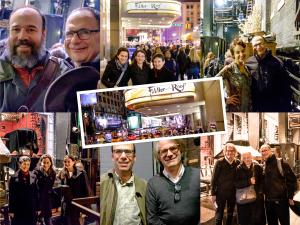

 I arrived for Shabbat morning services, held indoors, this time, in deference to the threatening weather. The predominantly musical morning was punctuated by short interpretations of Torah, each one presented by a group of three campers, and each one addressing the topic of promises.
I arrived for Shabbat morning services, held indoors, this time, in deference to the threatening weather. The predominantly musical morning was punctuated by short interpretations of Torah, each one presented by a group of three campers, and each one addressing the topic of promises.